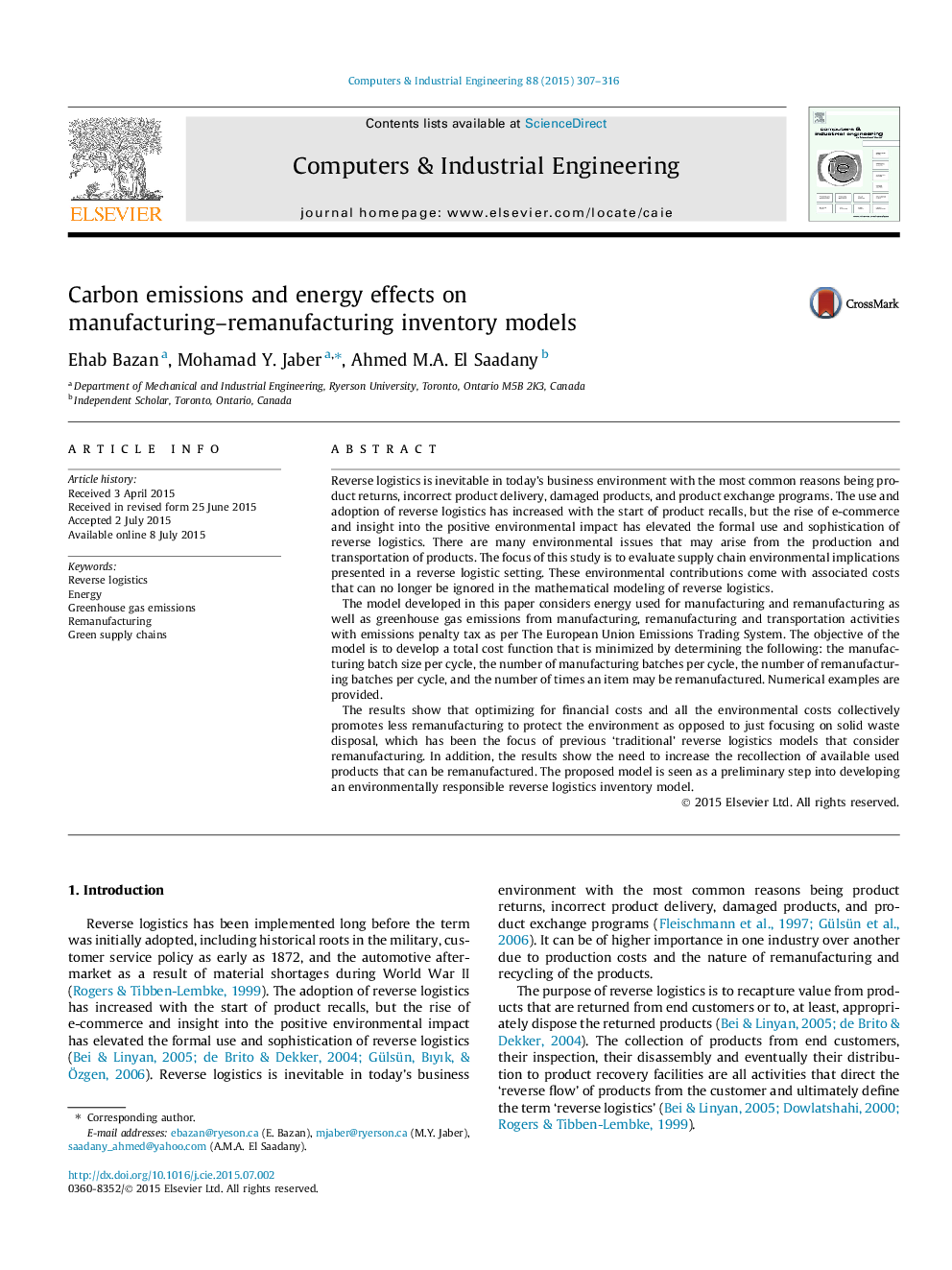| کد مقاله | کد نشریه | سال انتشار | مقاله انگلیسی | نسخه تمام متن |
|---|---|---|---|---|
| 1133414 | 1489078 | 2015 | 10 صفحه PDF | دانلود رایگان |
• A manufacturing/remanufacturing inventory model with waste disposal.
• Model considers GHG emissions and energy usage with tax penalty.
• Heavy-duty off-road tire retreading example is used.
• For some situations, results may promote less remanufacturing.
• The results recommend increasing recollection of used items.
Reverse logistics is inevitable in today’s business environment with the most common reasons being product returns, incorrect product delivery, damaged products, and product exchange programs. The use and adoption of reverse logistics has increased with the start of product recalls, but the rise of e-commerce and insight into the positive environmental impact has elevated the formal use and sophistication of reverse logistics. There are many environmental issues that may arise from the production and transportation of products. The focus of this study is to evaluate supply chain environmental implications presented in a reverse logistic setting. These environmental contributions come with associated costs that can no longer be ignored in the mathematical modeling of reverse logistics.The model developed in this paper considers energy used for manufacturing and remanufacturing as well as greenhouse gas emissions from manufacturing, remanufacturing and transportation activities with emissions penalty tax as per The European Union Emissions Trading System. The objective of the model is to develop a total cost function that is minimized by determining the following: the manufacturing batch size per cycle, the number of manufacturing batches per cycle, the number of remanufacturing batches per cycle, and the number of times an item may be remanufactured. Numerical examples are provided.The results show that optimizing for financial costs and all the environmental costs collectively promotes less remanufacturing to protect the environment as opposed to just focusing on solid waste disposal, which has been the focus of previous ‘traditional’ reverse logistics models that consider remanufacturing. In addition, the results show the need to increase the recollection of available used products that can be remanufactured. The proposed model is seen as a preliminary step into developing an environmentally responsible reverse logistics inventory model.
Journal: Computers & Industrial Engineering - Volume 88, October 2015, Pages 307–316
